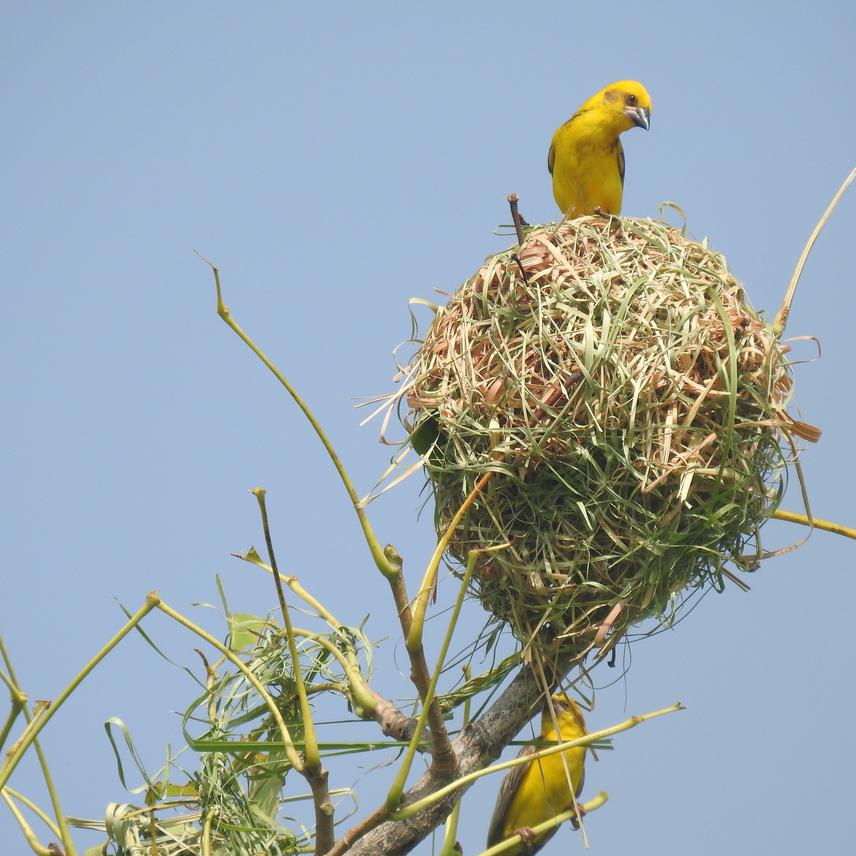Simran Dhakal
Finn's weaver is one of the four species of weavers found only in Nepal and India. Due to the continuous rapid decline in population the species has been listed as “Endangered” in International Union for Conservation of Nature (IUCN) Red list as of 2021 (BirdLife International, 2023). In Nepal the species is considered as “Critically Endangered” because of small and fragmented populations (Inskipp et al., 2016). The current global population of the species is estimated to be between 250 to 999 individuals with decreasing trend (BirdLife International, 2023). In India the numbers for the northern population (Uttar Pradesh and Uttarakhand) is estimated to be less than 200 individuals while for the north-eastern population (West Bengal and Assam) fewer than 300 individuals and with rapidly declining northern population (Bhargava, 2017). The Nepalese Finn's weaver population consists of the individuals recorded from Shuklaphanta National Park only, which is estimated to be less than 250 mature individuals with declining trend (Inskipp et al., 2016; Poudyal et al., 2021).

Finns Weaver (Male) guarding the nest and looking for female to approach © Simran Dhakal.
Despite being in such dire scenario, less attention has been drawn to its conservation and regular study by the main stakeholders, conservationists, and researchers. With proper planning and research design, scientifically robust species monitoring protocol needs to be developed and standardized for future monitoring works to obtain valuable information to develop site specific Finn’s weaver conservation plan and to sensitize decision makers, government authorities, conservation organizations, relevant stakeholders and researchers of various institutes (Bhargava 2017; Inskipp et al. 2013; Poudyal et al. 2020).
The study will assess the present status, distribution, and conservation threats of the species in the Shuklaphanta National Park in Nepal. Multi-seasonal point survey counts, nest counts, nest characterization, nest tree characterization, habitat characterization, and field observation along with key informants surveys will be used for data collection. The population size, density, and critical habitats of the species will be estimated and mapped.
Header: A group of Finns Weaver foraging at Shuklaphanta Grassland in Shuklaphanta National Park © Manoj Ayer.